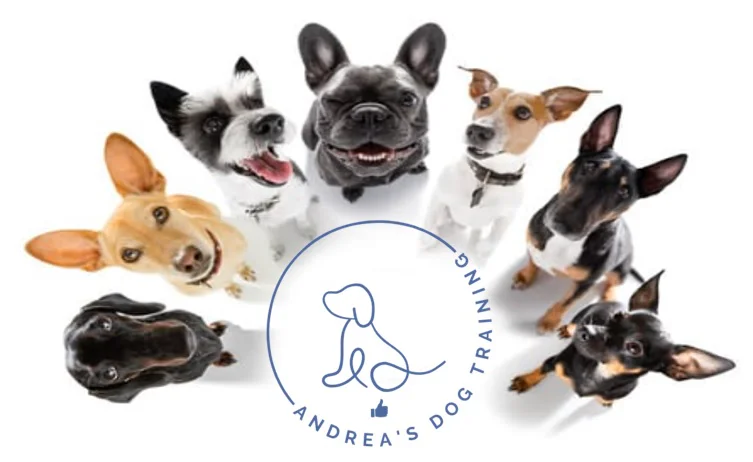Aggression in dogs is a complex and often misunderstood behavior that can arise from various causes. As a dog trainer specializing in positive reinforcement in New York City, addressing aggression in dogs for clients in Manhattan and Long Island, I believe it is important to ensure a safe and harmonious environment for both pets and their owners.
In this post, we will explore different types of aggression in dogs, potential causes, and effective strategies for management and training.
Types of Aggression in Dogs
1. Fear Aggression
Fear aggression occurs when a dog feels threatened and reacts defensively. This type of aggression is common in dogs that have had negative experiences or have not been properly socialized. Signs of fear aggression include growling, snapping, and biting when the dog feels cornered or trapped.
2. Territorial Aggression
Dogs are naturally protective of their territory. Territorial aggression occurs when a dog perceives an intruder in its space, whether it’s the home, yard, or even a favored resting spot. Barking, lunging, and biting are common behaviors associated with territorial aggression.
3. Resource Guarding
Resource guarding is when a dog becomes aggressive over possessions such as food, toys, or even a person. This type of aggression can manifest as growling, snapping, or biting when someone approaches the guarded item.
4. Protective Aggression
Protective aggression is directed towards perceived threats to the dog’s family or pack. This is often seen in dogs that are very attached to their owners and feel the need to protect them from harm.
5. Redirected Aggression
Redirected aggression occurs when a dog cannot reach the source of its frustration and instead redirects its aggression towards another target, often another animal or person nearby.
6. Predatory Aggression
Predatory aggression is rooted in a dog’s instinctual hunting behavior. This type of aggression is usually directed towards smaller animals and can be dangerous if not managed properly.
Potential Causes of Aggression
Understanding the underlying causes of aggression is essential for effective management and training. Some common causes include:
- Lack of Socialization: Dogs that haven’t been exposed to various people, animals, and environments during their critical developmental stages are more likely to exhibit aggressive behavior.
- Past Trauma: Dogs that have experienced abuse, neglect, or traumatic events may develop aggression as a defense mechanism.
- Medical Issues: Pain, illness, or neurological problems can lead to aggressive behavior. A thorough veterinary examination is crucial to rule out medical causes.
- Genetic Predisposition: Some breeds and individual dogs have a genetic tendency towards aggression.
- Environmental Stressors: High-stress environments, such as loud noises or chaotic households, can contribute to aggressive behavior.
 Strategies for Management and Training
Strategies for Management and Training
As a dog trainer using positive reinforcement, my approach is focusing on building trust, reducing fear, and promoting desirable behaviors. Here are some strategies:
1. Behavioral Assessment
Conduct a thorough assessment to identify triggers and patterns of aggressive behavior. Understanding the context in which aggression occurs will help tailor your training approach.
2. Desensitization and Counter-Conditioning
Gradually expose the dog to its triggers in a controlled manner while pairing the exposure with positive experiences. For example, if a dog is fearful of strangers, start with distant, non-threatening encounters and reward calm behavior.
3. Management Techniques
Implement management strategies to prevent aggressive incidents. This may include using barriers, muzzles, or leashes to ensure safety while working on behavior modification.
4. Teach Alternative Behaviors
Use positive reinforcement to teach the dog alternative behaviors to replace aggression. For example, train the dog to sit and focus on you when it sees a trigger, rewarding calm behavior consistently.
5. Enrichment and Exercise
Provide ample mental and physical stimulation to reduce stress and frustration. Enrichment activities such as puzzle toys, scent games, and regular exercise can help keep the dog’s mind and body engaged.
6. Owner Education
Educate owners on recognizing early signs of aggression and how to respond appropriately. Encourage consistency in training and management techniques to ensure long-term success.
7. Professional Support
In cases of severe aggression, collaborating with a veterinary behaviorist or a specialist in dog behavior may be necessary. A multi-disciplinary approach can provide comprehensive solutions.
Addressing aggression in dogs requires a compassionate and systematic approach. By understanding the different types of aggression, identifying potential causes, and implementing positive reinforcement strategies, I can help my clients in Manhattan and Long Island create a safer and more enjoyable environment for their dogs.
Remember, patience and consistency are key to transforming aggressive behaviors and fostering a strong, trusting bond between dogs and their owners.
Would you like a free 15 minute over the phone consultation?
Click the button below to schedule.








